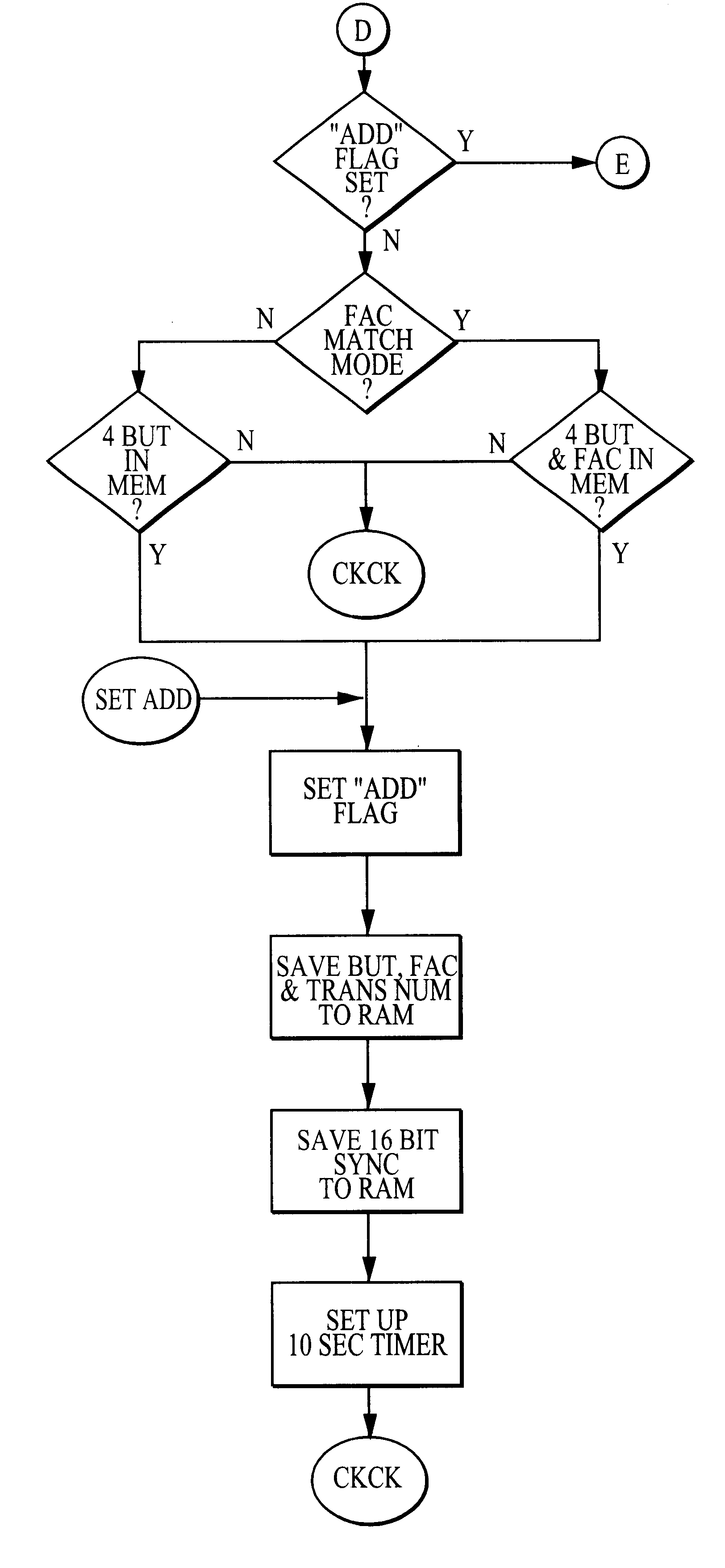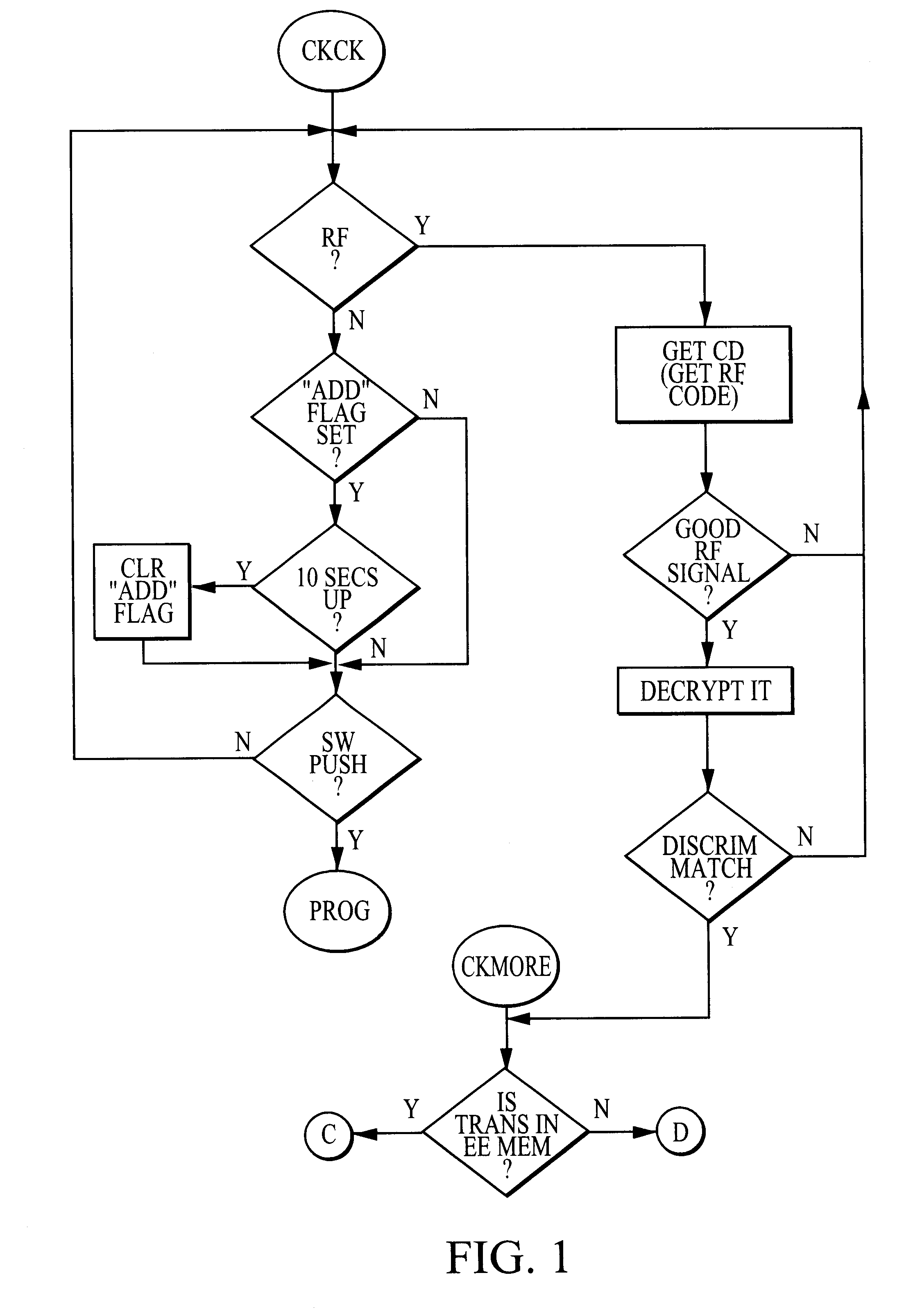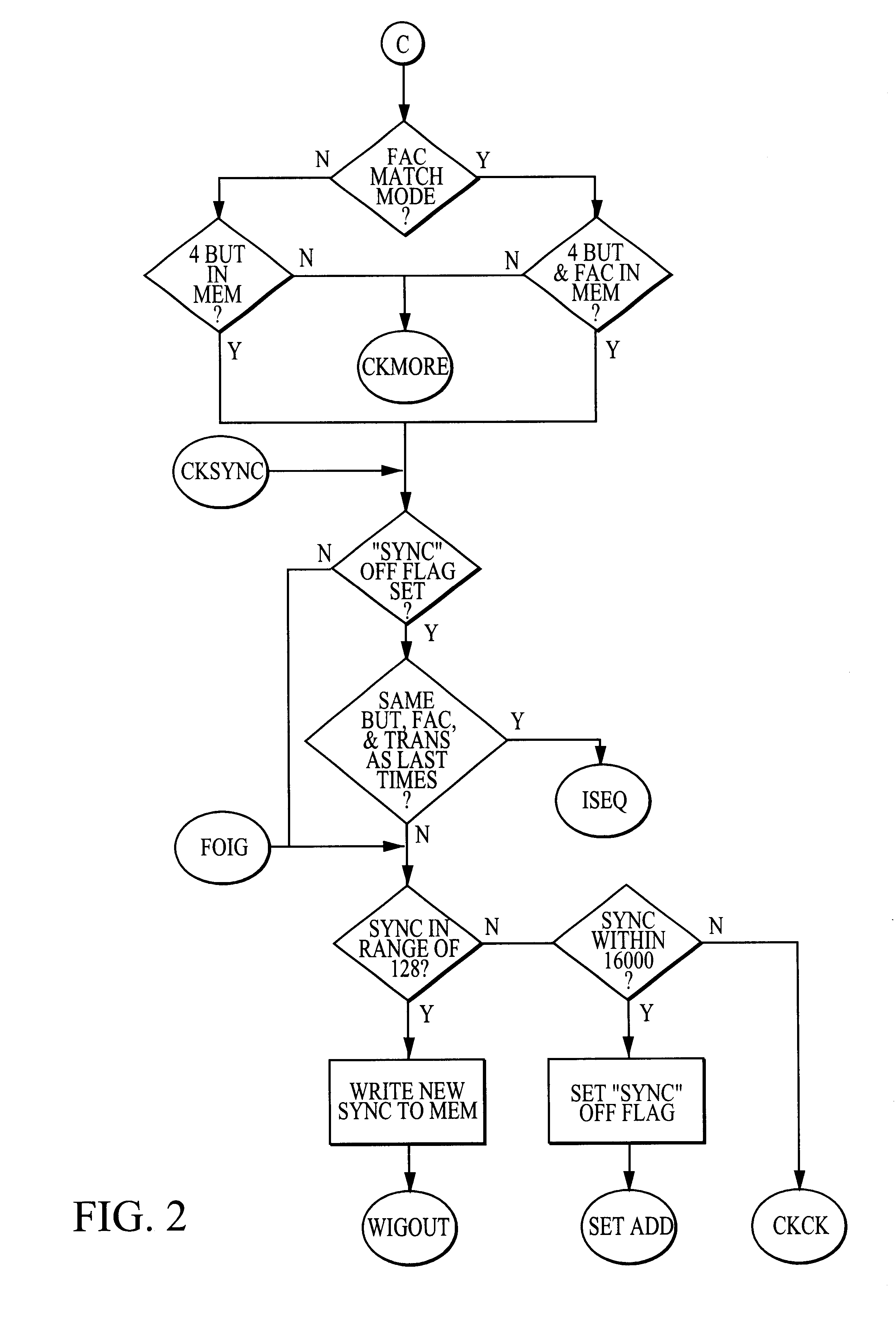Method and apparatus for radio frequency security system with automatic learning
a radio frequency security and automatic learning technology, applied in anti-theft devices, program control, instruments, etc., can solve the problems of user-specific control burden, substantial turnover or addition of the number or identity of users needing access, and improvement of security normally comes at some cos
- Summary
- Abstract
- Description
- Claims
- Application Information
AI Technical Summary
Benefits of technology
Problems solved by technology
Method used
Image
Examples
Embodiment Construction
A preferred embodiment of the invention is illustrated in the Figures, which include flowcharts of interactions between a first transmitter, a second transmitter and a receiver. The preferred method and apparatus can utilize any suitable code hopping encoder and decoder, such as the model HCS301 available from Microchip Technology Incorporated (“Microchip”). Examples of suitable hopping code technology are provided in Microchip's HCS301 product catalog and U.S. Pat. No. 5,686,904, the latter of which is hereby incorporated by reference herein regarding, among other things, its teachings of encryption and decryption algorithms and synchronization or hop code technology.
In a preferred embodiment, a single receiver may be used with hundreds to several thousand transmitters, with the number of transmitters limited only by the receiver memory. As indicated above, the invention is especially useful in applications involving a large number of users (such as in a large apartment complex, a ...
PUM
 Login to View More
Login to View More Abstract
Description
Claims
Application Information
 Login to View More
Login to View More - R&D
- Intellectual Property
- Life Sciences
- Materials
- Tech Scout
- Unparalleled Data Quality
- Higher Quality Content
- 60% Fewer Hallucinations
Browse by: Latest US Patents, China's latest patents, Technical Efficacy Thesaurus, Application Domain, Technology Topic, Popular Technical Reports.
© 2025 PatSnap. All rights reserved.Legal|Privacy policy|Modern Slavery Act Transparency Statement|Sitemap|About US| Contact US: help@patsnap.com



